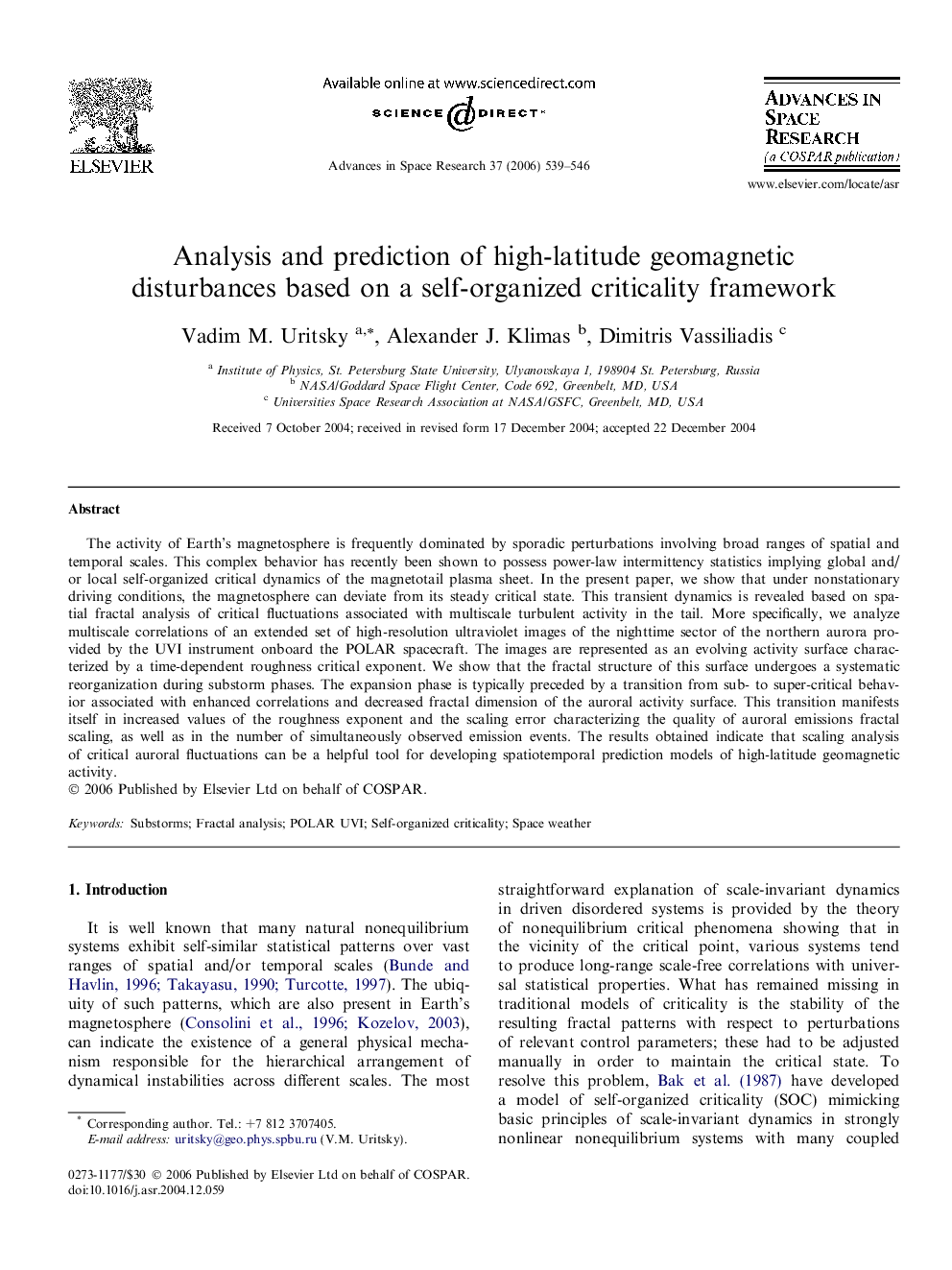| Article ID | Journal | Published Year | Pages | File Type |
|---|---|---|---|---|
| 1769396 | Advances in Space Research | 2006 | 8 Pages |
Abstract
The activity of Earth's magnetosphere is frequently dominated by sporadic perturbations involving broad ranges of spatial and temporal scales. This complex behavior has recently been shown to possess power-law intermittency statistics implying global and/or local self-organized critical dynamics of the magnetotail plasma sheet. In the present paper, we show that under nonstationary driving conditions, the magnetosphere can deviate from its steady critical state. This transient dynamics is revealed based on spatial fractal analysis of critical fluctuations associated with multiscale turbulent activity in the tail. More specifically, we analyze multiscale correlations of an extended set of high-resolution ultraviolet images of the nighttime sector of the northern aurora provided by the UVI instrument onboard the POLAR spacecraft. The images are represented as an evolving activity surface characterized by a time-dependent roughness critical exponent. We show that the fractal structure of this surface undergoes a systematic reorganization during substorm phases. The expansion phase is typically preceded by a transition from sub- to super-critical behavior associated with enhanced correlations and decreased fractal dimension of the auroral activity surface. This transition manifests itself in increased values of the roughness exponent and the scaling error characterizing the quality of auroral emissions fractal scaling, as well as in the number of simultaneously observed emission events. The results obtained indicate that scaling analysis of critical auroral fluctuations can be a helpful tool for developing spatiotemporal prediction models of high-latitude geomagnetic activity.
Related Topics
Physical Sciences and Engineering
Earth and Planetary Sciences
Space and Planetary Science
Authors
Vadim M. Uritsky, Alexander J. Klimas, Dimitris Vassiliadis,
